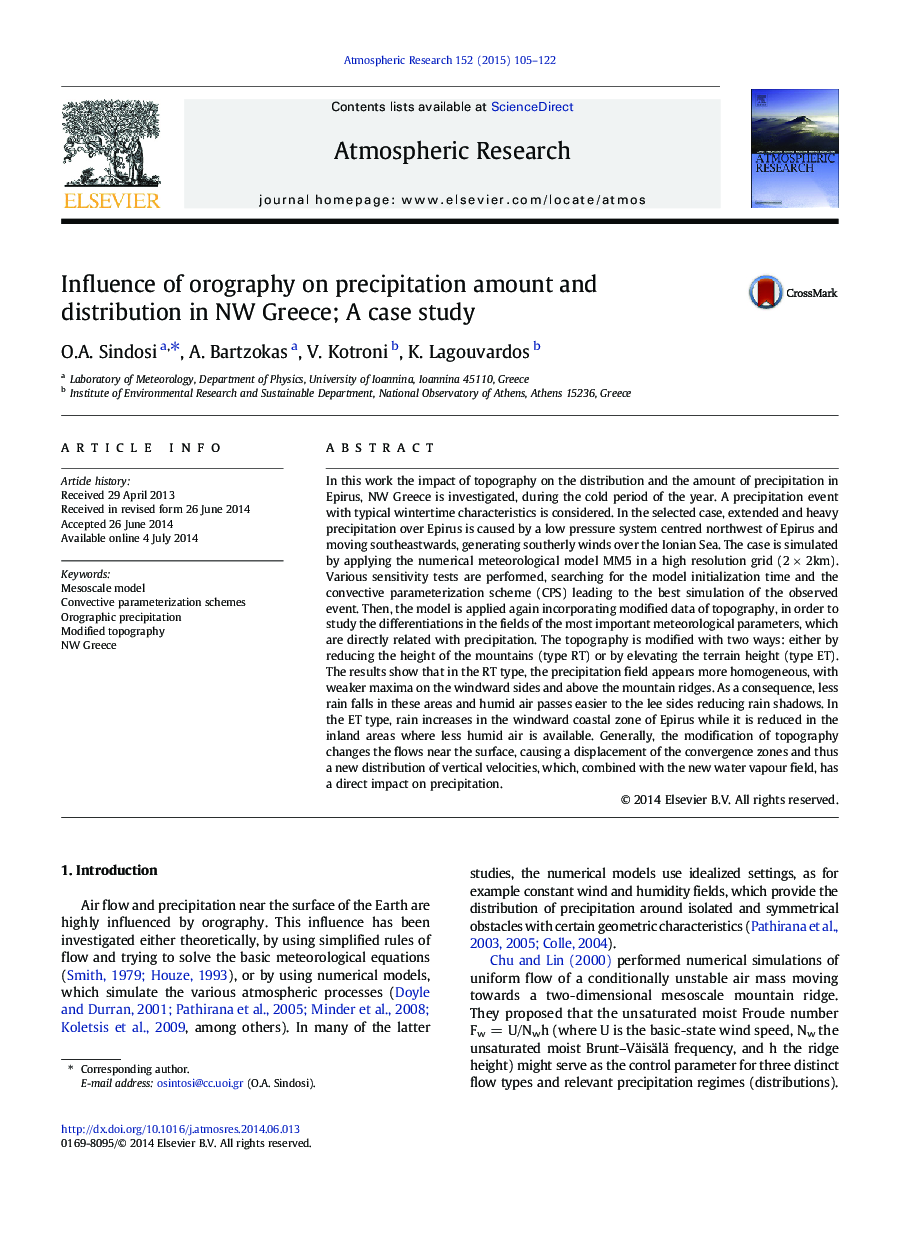| Article ID | Journal | Published Year | Pages | File Type |
|---|---|---|---|---|
| 4449836 | Atmospheric Research | 2015 | 18 Pages |
•Study the impact of topography on the amount and distribution of precipitation•Perform high resolution model simulations•Perform sensitivity experiments with modified topography
In this work the impact of topography on the distribution and the amount of precipitation in Epirus, NW Greece is investigated, during the cold period of the year. A precipitation event with typical wintertime characteristics is considered. In the selected case, extended and heavy precipitation over Epirus is caused by a low pressure system centred northwest of Epirus and moving southeastwards, generating southerly winds over the Ionian Sea. The case is simulated by applying the numerical meteorological model MM5 in a high resolution grid (2 × 2km). Various sensitivity tests are performed, searching for the model initialization time and the convective parameterization scheme (CPS) leading to the best simulation of the observed event. Then, the model is applied again incorporating modified data of topography, in order to study the differentiations in the fields of the most important meteorological parameters, which are directly related with precipitation. The topography is modified with two ways: either by reducing the height of the mountains (type RT) or by elevating the terrain height (type ET). The results show that in the RT type, the precipitation field appears more homogeneous, with weaker maxima on the windward sides and above the mountain ridges. As a consequence, less rain falls in these areas and humid air passes easier to the lee sides reducing rain shadows. In the ET type, rain increases in the windward coastal zone of Epirus while it is reduced in the inland areas where less humid air is available. Generally, the modification of topography changes the flows near the surface, causing a displacement of the convergence zones and thus a new distribution of vertical velocities, which, combined with the new water vapour field, has a direct impact on precipitation.
